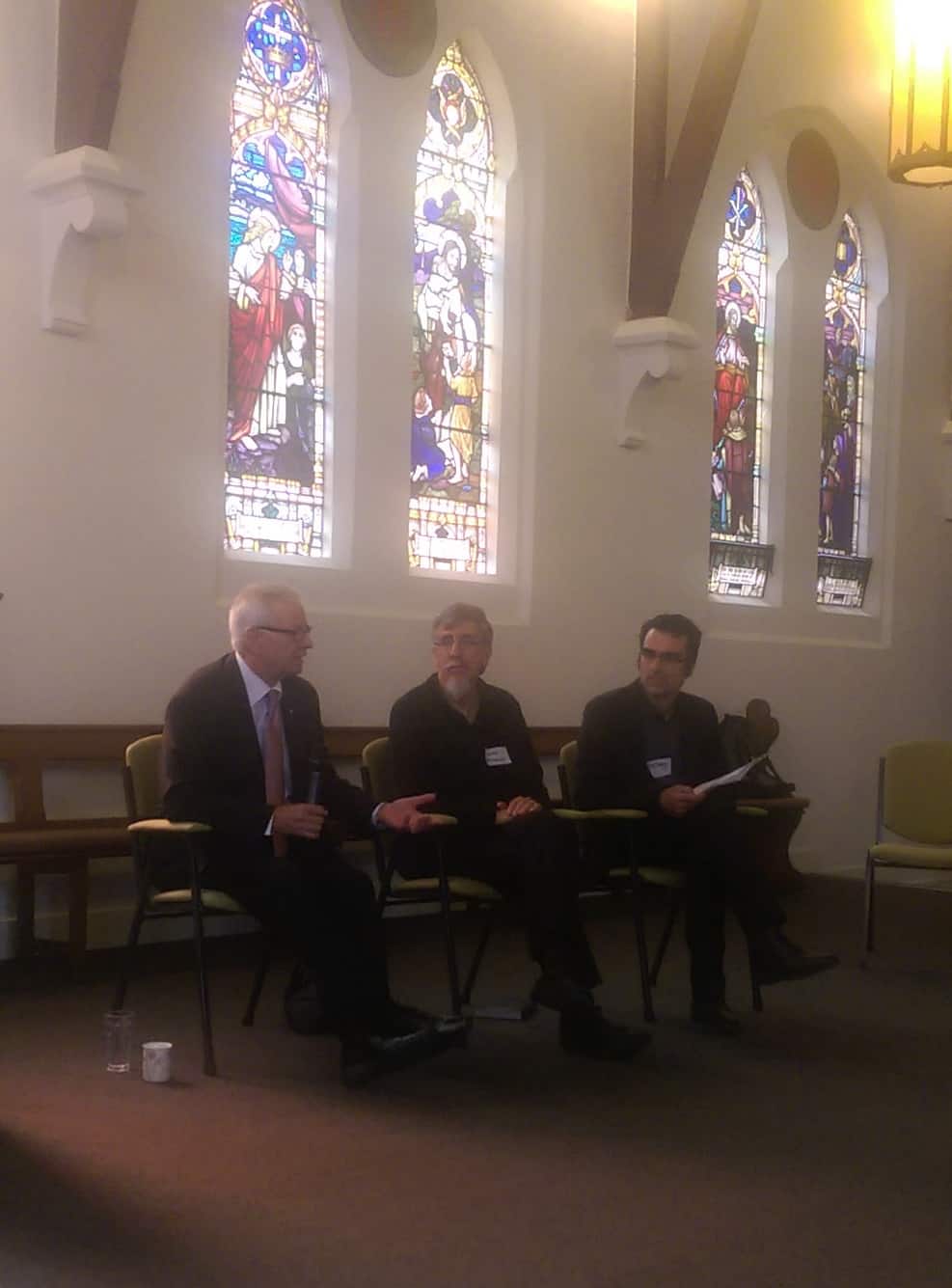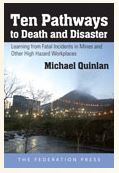 I have a lot of books about workplace safety. Many of them are referenced frequently, several have changed my thoughts. However if I was asked which book has had the most impact on my values and understanding of occupational health and safety (OHS), my response would be of a book I read before I even knew OHS existed. That book is The Story of Ferdinand, and this is why. Continue reading “The most influential book about modern OHS”
I have a lot of books about workplace safety. Many of them are referenced frequently, several have changed my thoughts. However if I was asked which book has had the most impact on my values and understanding of occupational health and safety (OHS), my response would be of a book I read before I even knew OHS existed. That book is The Story of Ferdinand, and this is why. Continue reading “The most influential book about modern OHS”
Category: book
Book Launch of Job Quality in Australia
Last week this blog reviewed the book Job Quality in Australia emphasising how worker safety, health and well-being is a vital element of job quality which, in turn, is crucial for Australia’s productivity. In preparation for a book launch in Sydney on 23 June 2015, the University of Sydney has released a media statement (available…
“Job Quality” progresses OHS thinking
 On housing affordability this week, Australia’s Treasurer, Joe Hockey, suggested a solution would be to get a “good job”. This occurred a month or so after the publication of a terrific book (that Hockey obviously has yet to read) called “Job Quality in Australia“, edited by Angela Knox and Chris Warhurst for Federation Press. The editors write about the importance of job quality which “…affects attitudes, behaviour and outcomes at the individual, organisational and national level” (page 1) and job quality’s political context:
On housing affordability this week, Australia’s Treasurer, Joe Hockey, suggested a solution would be to get a “good job”. This occurred a month or so after the publication of a terrific book (that Hockey obviously has yet to read) called “Job Quality in Australia“, edited by Angela Knox and Chris Warhurst for Federation Press. The editors write about the importance of job quality which “…affects attitudes, behaviour and outcomes at the individual, organisational and national level” (page 1) and job quality’s political context:
“While the current Abbott government is primarily concerned with improving Australia’s macro-economic position, such a position is unlikely to be achieved and sustained without a policy agenda focusing on job quality.” (page 2)
Significantly for this blog’s readership, the book has a chapter, written by
Sen. Doug Cameron launches “Hard Work Never Killed Anybody”
 On 7 May 2015, Senator Doug Cameron (Australian Labor Party, pictured) launched a new book written by John Bottomley (pictured, centre) called “Hard Work Never Killed Anybody – How the idolisation of work sustains this deadly lie“. Cameron acknowledged the uniqueness of the book as ranging
On 7 May 2015, Senator Doug Cameron (Australian Labor Party, pictured) launched a new book written by John Bottomley (pictured, centre) called “Hard Work Never Killed Anybody – How the idolisation of work sustains this deadly lie“. Cameron acknowledged the uniqueness of the book as ranging
“…across, theology, Marxism, the Protestant work ethic, and the Enlightenment.”
This combination is rare in the field of occupational health and safety but Cameron said that Bottomley provides evidence that
“…the promise of industrialised society that hard work brings its own rewards is a lie”
and that this is a necessary and important challenge to the current political consensus. Continue reading “Sen. Doug Cameron launches “Hard Work Never Killed Anybody””
Master guide or handbook
In 2012, SafetyAtWorkBlog reviewed the first edition of the Australian Master Work Health and Safety Guide. CCH Wolters Kluwer has released its second edition and, sadly, it repeats many of the criticisms in the 2012 review.
 The title of Australian Master Work Health and Safety Guide (2nd ed) seems inaccurate if one considers a book with “master ” in its title to be a “masterwork”. This is not a masterwork and the publishers have emphasised to SafetyAtWorkBlog that the book was never intended to be. The book is intended to be a brief outline of the most important contemporary occupational health and safety (OHS) issues in Australia and to provide practical advice, checklists and templates. In fact, the word that should be focussed on in the title is “guide”.
The title of Australian Master Work Health and Safety Guide (2nd ed) seems inaccurate if one considers a book with “master ” in its title to be a “masterwork”. This is not a masterwork and the publishers have emphasised to SafetyAtWorkBlog that the book was never intended to be. The book is intended to be a brief outline of the most important contemporary occupational health and safety (OHS) issues in Australia and to provide practical advice, checklists and templates. In fact, the word that should be focussed on in the title is “guide”.
The publishers advised that “master” is in the title to indicate it is part of its “Master Series“, a “brilliant” series described as
“Australia’s premium range of professional books, widely accepted as the leaders in their fields.”
SafetyAtWorkBlog looked at a couple of chapters to assess the quality of the content. As workplace bullying is such a contentious issue. the Bullying and Violence chapter was a focus. There were a surprising number of omissions in this chapter.
New book challenges current OHS trends
 Professor Michael Quinlan has a new book that focuses on lessons from recent mining disasters but, as with the best of occupational health and safety (OHS) books, it challenges orthodoxies. Some OHS consultants and experts have built careers on these orthodoxies, trends and fads, and will feel uncomfortable with the evidence put forward by Quinlan in “Ten Pathways to Death and Disaster – Learning from Fatal Incidents in Mines and Other High Hazard Workplaces“. The honesty and humanity in this book makes it an essential part of any OHS professional’s library.
Professor Michael Quinlan has a new book that focuses on lessons from recent mining disasters but, as with the best of occupational health and safety (OHS) books, it challenges orthodoxies. Some OHS consultants and experts have built careers on these orthodoxies, trends and fads, and will feel uncomfortable with the evidence put forward by Quinlan in “Ten Pathways to Death and Disaster – Learning from Fatal Incidents in Mines and Other High Hazard Workplaces“. The honesty and humanity in this book makes it an essential part of any OHS professional’s library.
Quinlan establishes an important tenet from the very start:
“… knowledge is not created in a social vacuum.” (page xi)
This simple dictum is vital to an understanding of the true causal factors on OHS decision-making. People die from OHS failures. Politicians create laws and situations that can encourage failures, increase risk and can provide a veneer of respect for heartlessness and exploitation. Business owners may feel pressured to place production before safety. Some OHS writers and advocates stop, often unconsciously, at the point where their theory or market research would fail scrutiny. Some apply critical thought only “as far as is reasonably practicable” to continue a business activity that is short-term or to sell their consultancy package to gullible or naive corporate executives.
Quinlan writes of the “political economy of safety”:
“The political economy perspective argues that safety, including workplace disasters, can only be understood in the context of the distribution of wealth and power within societies, and dominant social policy paradigms that privilege markets and profit, production or economic growth over safety.” (page 24, emphasis added)
To many readers this may sound like socialism in its mention of wealth distribution and power but such a perspective is valid even though it may be unfashionable. Such a broad perspective allows for a critical assessment of other OHS research approaches such as, for instance, the culture advocates.
Australia’s OHS Body of Knowledge project grows
The recent launch of several new chapters of the OHS Body of Knowledge (OHSBoK), associated with the Safety Institute of Australia, did not allow for questions from the audience but I was able to catch up with the coordinator of the project, Pam Pryor, and put my questions directly. (My thanks go to Pam for her honesty and time.)
One of the intentions of the OSHBoK has been to maintain currency and relevance. Was there a plan to review and revise the existing chapters? Pryor advised that there is a seven-year review schedule for all chapters. Some chapters may need reviewing earlier, particularly if there are references to specific legislation and that legislation has changed.
Is there a plan to establish an index or to improve searchability?
